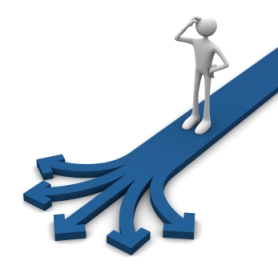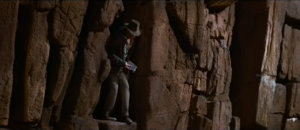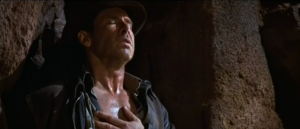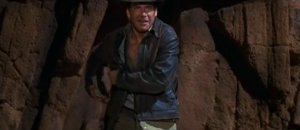 Risk-taking, envelope-pushing innovators get a lot of the publicity these days when it comes to the front lines of 21st-century education, and for great reason.
Risk-taking, envelope-pushing innovators get a lot of the publicity these days when it comes to the front lines of 21st-century education, and for great reason.
Innovators deal in What’s New, and What’s New pops.
What’s New flashes. What’s New gleams. What’s New splashes onto the scene. What’s New is the future. The future that once seemed so far away, and now is so close you can literally reach out and touch it. And What’s New- especially right now in K-12 education– is out-of-this-world fascinating in the opportunities it provides for student learning experiences.
In the face of this continuously evolving landscape, the innovator’s dilemma (not to be confused with Clay Christensen’s work of the same name) is clear: keep moving to What’s New, or start building on What’s Now. And since innovation by definition has to keep on moving (like a shark that needs to keep swimming in order to breathe), those drawn to innovating will tend to keep moving, too.
Upon the introduction of a disruptive innovation, Christensen’s Innovator’s Dilemma (summarized in this sketchnote video) reveals that those who once led the field have a decision to make as well: Adapt or die. Shift practices or fizzle out. Since those who have experienced success seek to keep being successful, they may not recognize the paradox that a change in implementation practices may be required in order to achieve the same outcomes. The tension between changing practice and maintaining success leads to paralysis, and past achievement leads to present stasis.
How do leaders help to inspire this change in practice?
From an organizational perspective, I have recently grown interested less in the concept of competing organizations as described in Christensen’s work, and more in Rogers’ Diffusion of Innovations (one of the referenced works in Gladwell’s The Tipping Point), which deals in how communities grow and learn based on the ways that its individuals approach change. And while the Innovator’s Dilemma is certainly interesting within that context, I’m more drawn to the dilemma of the Early Adopter.
Who is this Early Adopter? The Early Adopter is often seen as a leader, though is not always first to change. They are described in a variety of sources as having a high degree of “opinion leadership” in the community, which I suppose is due to their boundary-spanning role as both “first follower” of the Innovator and “trusted translator” to the majority. This video clip from Indiana Jones and the Last Crusade serves as the context for what I see as the pivotal stakeholder group in the process of organizational change.
Below is a shot-by-shot walk-through of this clip to tell the story of the Early Adopter:
So then, what is the Early Adopter’s Dilemma? The Early Adopter’s two-stage dilemma starts with one key decision: in the face of the What’s New, do I choose stasis or change? Do I take a leap of faith, trusting in what I’ve seen of the Innovators’ successes and challenges? Or do I stick with what has worked for me up to (and perhaps including) now? More often than not, these individuals will see the benefits of successful changes as outweighing the costs, and will move forward with the innovator’s quickly scribbled map as their guide.
The second stage of the Early Adopter’s dilemma emerges once they experience What’s New. This second stage is wrapped around the exact same decision of stasis or change, though in a more others-focused context: Do I keep sprinting ahead? Or do I stop just long enough to make it easier for those who follow to know what to look for (and what to avoid)? Thankfully, the Early Adopters have a desire to stop and throw that handful of sand on the previously invisible path. Otherwise, the rest of us would be lost.
But what does this mean for change leaders? Some teammates and I have been processing this concept together, and in our conversations have identified a variety of ways we engage those we see as Early Adopters. If you’re somehow charged with leading organizational change, here’s an idea of some ways to use this framework for leadership in a practical way:
- Find your Innovators and watch they do. They will most certainly show you What’s New. Let them do their thing and take the risks that identify the What’s New that is of interest to you in your situation.
- Find your Early Adopters and listen. Share a proposed change, and ask them to talk through the costs and benefits they see. They will likely see the benefits of successful changes as outweighing the costs, and will articulate those benefits in a way that will help to clarify the Why of the change to What’s New.
- Share the Why that you heard from the Early Adopters. The perspective shared by this trusted group will help identify exactly what would make What’s New intriguing and accessible to the majority.
Change leaders, follow your Early Adopters. Their perspective will help guide your team across the chasm of the unknown, but only if you take a moment of pause to find them and listen.










Tony,
I think you’ve captured a fundamentally important pillar of being an innovator – being willing to take that leap of faith…by knowing something of the maps/notes before, and by being willing to continue the path marking process.
There is a designer’s eye and hand in this process, too. Indy has notes of #Discovery. He is #Empathizing with his user (his dad). He is willing to #Experiment as a searcher and adventure archeologist, and he makes an educated leap of faith on that cliff face. And he #Produces when he returns with that chalice and completes the needs of his user.
Of course, all of this stems from an innovator who has the freedom to pursue his passions and to fulfill his pressing mission. To me, this freedom, driven from the more root Cs of 21st learning – #Curiosity, #Control, #Caring, #Community – is essential and critical to an innovator even being willing to leap. For educators and young learners (“students”), we must continue to create systems where their passions find room with freedom to take leaps of faith for innovating.
Thanks so much for this post!
Bo
Thanks for sharing your thoughts, Bo! Sure enough, Indy’s designer’s eye “chose wisely.” I know I’ll have that designer in mind when thinking about these Early Adopters.
What I’ve been wrestling with more recently is that “leap of faith.” I feel like there are some like Indy who make “educated leaps of faith” when standing at the edges of their cliff faces, while others before him might have “taken a leap” right into the chasm because of their high tolerance for risk and low need for a map. Sometimes these risk-takers are those from whom we can learn (both from their successes & their failures), though I get concerned that we sometimes follow those “high risk takers” thinking that they’re making an educated leap.
How do we distinguish those who are the uber-risk-takers- going after new because of new- vs the “educated risk takers” like Indy?
As one might imagine, I agree with pretty much all the Bo said…that’s what I get for waiting to comment. My big takeaway is that you have a very firm grasp on some of the key elements of organizational change, which does not happen through chance. In fact, though many in schools want it to, innovative change does not do well as a purely organic process. It takes intentional leadership, sustainable effort, and focus. Indy has all of those!
I will add one bit of discourse that maybe we can drill down on: In an early paragraph you identify a dilemma: to keep moving to What is New or start building on What is Now. You say that by definition, innovation requires us to keep moving. I take a somewhat different view. The definition innovation that I believe is most critical is “innovation is the implementation of ideas that enhance the value of the organization.” We all have lots of good ideas and want to move from one thing to another, but if some movement does not enhance value, it is not innovative. I find the most innovative people and schools are those that find this balance of fast and slow, of forward and back, of movement and reflection. It may be that what is most innovative is in our rear view mirror, as we find with the teachings of Dewey. It may be that a best practice in the classroom is right in our own room if we just take a few moments with our students to reflect on it from a different viewpoint (empathy).
Thanks for such a great post; with leaders like you who understand and are willing to implement the process, our schools will be in great shape!
Thanks, Grant- I appreciate your thoughts very much on this org change question. I’m in the midst of trying to play around with these “diffusion of change” models that match the world I tend to see a little bit more closely. What I’m getting from your distinction on the language of innovation is that Innovator might not be the right word for the people I’m thinking about (given that as both you and Bo point out, Early Adopters are Innovators in a sense as well).
I’m thinking that those on the “leading edge” of change might be better described not as “Innovators” but as “Risk Takers.” The Risk Takers stand on the front end of change because they have to, while the Early Adopters learn from the Risk Takers’ successes and failures and start integrating the newness into their practice. Those who undergo practices that enhance the value of the organization are therefore the Innovators, regardless of whether they are front-edge Risk Takers or the second-wave Early Adopters.
In the spirit of considering this post from a different point of view: What if the innovation (i.e. the implementation of ideas that enhance the value of the organization) happens to be the abandonment of change rather than its adoption? Would that group who resists change be seen as Innovators if their adherence to the status quo enhances the value of the organization?
Tony, thanks for asking me to take a look at this piece. And, I am not the least bit surprised to show up and see comments from Bo and Grant. They have given you important feedback and encouragement! #wisemen
Not much more to say, other than a couple of things we might ponder:
–> How might we “lever up” the early adopters from the individual to the team? Love the Indiana Jones example, and wonder how we might remix/transform it as a team’s leap of faith and path-making?
–>Question for Grant: if a movement does not enhance value for a particular organization, does that really mean it isn’t innovative? Perhaps not to that organization, but repurposed elsewhere? I think of the “innovations” that are inspired but not necessarily embraced in one context (can think of an example from Wikinomics around P&G’s R&D work) but are valued in another.
Cheers!
Laura
Totally agree with you in reference to the team vs the individual. The first group of drawings of this idea emerged for me in 2009-2010 and were all largely team-based / group-based in nature. In fact, your question caused me to go find the photo of the image I had saved in iPhoto, which then caused me to draft some language based on “looking at both sides” of the chasm of change. Here it is: https://twitter.com/tborash/status/428740593619988480/photo/1
Feedback / ideas are welcomed on this image, too – I’ll likely tweet it to you right now. Thanks for thinking about this with me!
These old eyes need a larger screen than my phone to see the image! Will definitely look at when I get on a different device.
Meantime, I keep thinking back to a metaphor I used when in corporate banking and defining where we wanted to be in the market during a time of great change. I talked about a train, and how this particular company was not going to take the risk of being the engine. There were more bold players than we were on competing for clients. However, we also didn’t want to be the caboose nor the end of the train. We wanted/needed to be the first or second car.
When I think of early adopters, that’s the mental image that keeps coming to mind.
LD
Pingback: Crossing the Chasm of Change | Learning to Lead Learning
Pingback: Half Empty? Half Full? That’s Only Half The Story | Learning to Lead Learning
Pingback: Welcome – A Vocational Catechism